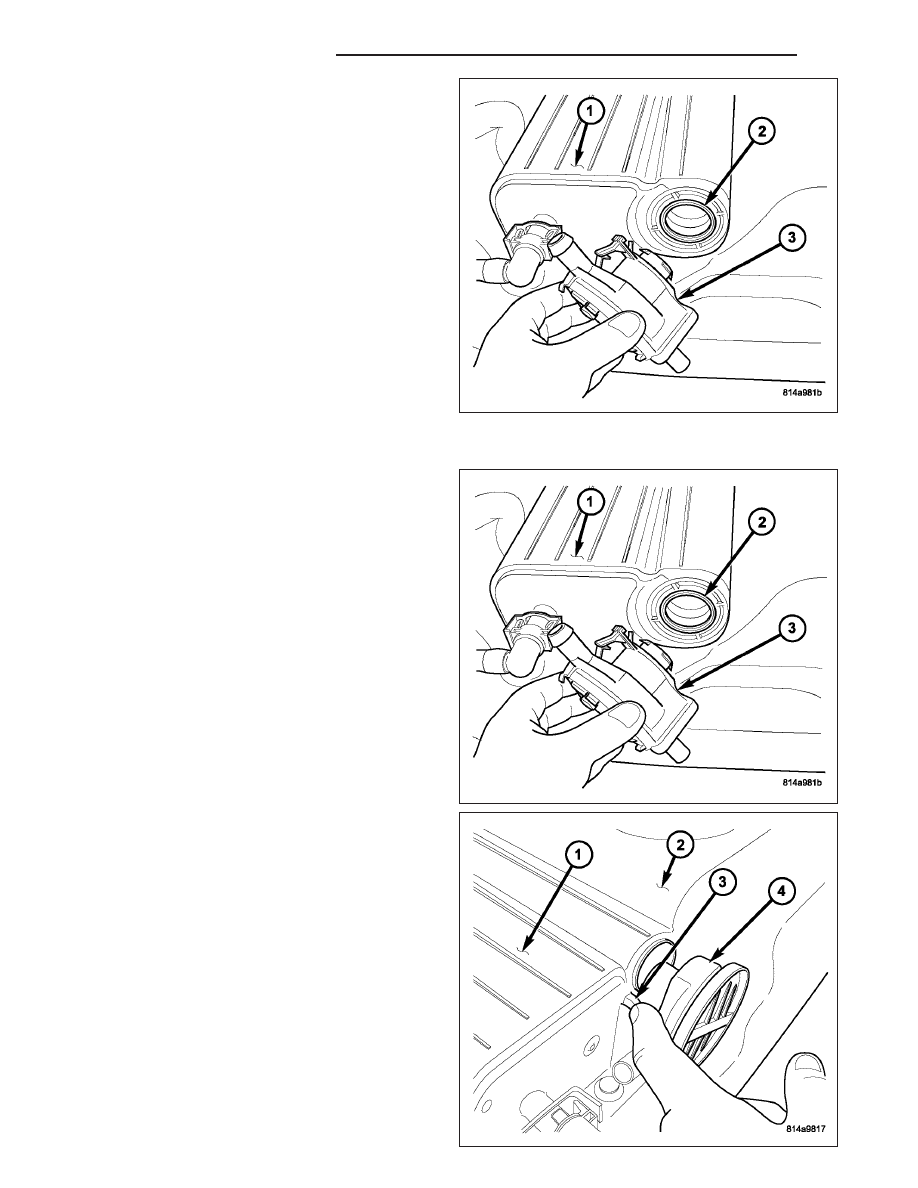Content .. 1789 1790 1791 1792 ..
Jeep Grand Cherokee WK. Manual - part 1791

7. Remove NVLD pump o-ring (2) from EVAP canister
(1).
INSTALLATION
1. Install new NVLD pump o-ring (2) to EVAP canister
(1).
2. Position NVLD pump (4) into EVAP canister (1).
3. Rotate pump (4) until tab (3) aligns with notch in
EVAP canister (1).
25 - 16
EVAPORATIVE EMISSIONS
WK